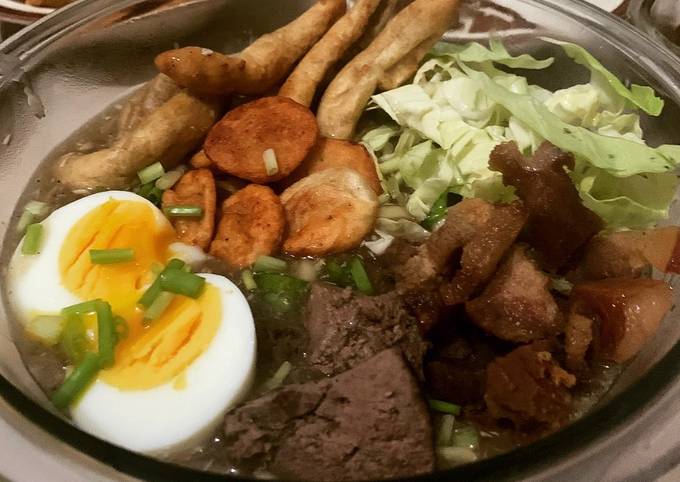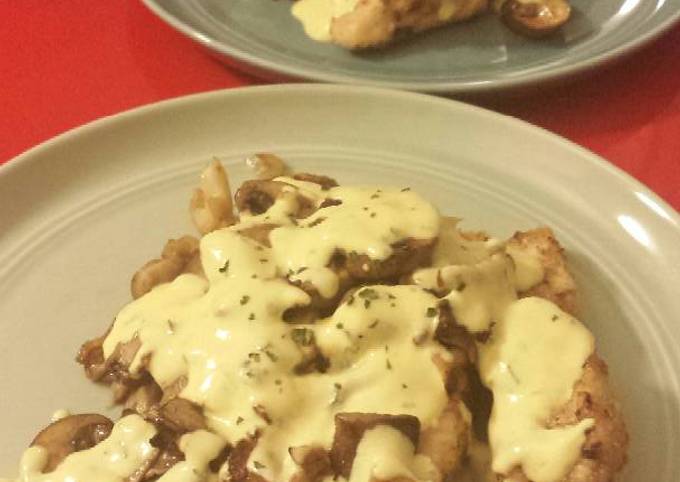
Hello everybody, I hope you are having an amazing day today. Today, we’re going to make a special dish, filipino food series: batangas pancit lomi or lomi (noodles). One of my favorites food recipes. For mine, I will make it a little bit unique. This is gonna smell and look delicious.
Great recipe for Filipino Food Series: Batangas Pancit Lomi or Lomi (Noodles). Trivia: The word "pancit" colloquially refers to noodles and noodle dishes. Filipino noodle dishes maybe of Chinese origin, but due to the influential colonial era most noodle restaurants were called by a. Filipino Food Series: Batangas Pancit Lomi or Lomi (Noodles) Trivia: The word "pancit" colloquially refers to noodles and noodle dishes.
Filipino Food Series: Batangas Pancit Lomi or Lomi (Noodles) is one of the most popular of recent trending meals on earth. It is appreciated by millions every day. It’s easy, it’s quick, it tastes delicious. They are fine and they look fantastic. Filipino Food Series: Batangas Pancit Lomi or Lomi (Noodles) is something which I’ve loved my whole life.
To begin with this particular recipe, we must first prepare a few components. You can have filipino food series: batangas pancit lomi or lomi (noodles) using 18 ingredients and 6 steps. Here is how you can achieve it.
The ingredients needed to make Filipino Food Series: Batangas Pancit Lomi or Lomi (Noodles):
- Take Miki Noodles (Basically egg noodles)
- Prepare medium size shallots
- Get garlic
- Get soy sauce
- Prepare pork broth
- Take ground black pepper
- Prepare cassava starch (others use flour, but I personally like the thickness texture of cassava starch)
- Get salt
- Get fish sauce
- Make ready fried Kikiam
- Take chicken balls
- Take pork liver (marinated in soy sauce and lemon or calamansi)
- Prepare pork belly cut into thin strips deep fried (pork rind)
- Take cabbage washed and chopped
- Make ready eggs hard boiled
- Prepare egg beaten
- Make ready oil
- Prepare Spring onions
It is a challenge to be able to finish eating before the bowl gets cold. Filipino Food Series: Batangas Pancit Lomi or Lomi (Noodles). Filipino Food Series: Batangas Pancit Lomi or Lomi (Noodles) Trivia: The word "pancit" colloquially refers to noodles and noodle dishes. Filipino noodle dishes maybe of Chinese origin, but due to the influential colonial era most noodle restaurants were called by a Spanish-sounding names like, "panciteria" or "carinderia".
Instructions to make Filipino Food Series: Batangas Pancit Lomi or Lomi (Noodles):
- Fry all toppings first, pork belly, kikiam, chicken balls separately. Half cook the marinated liver.
- Sauté in oil the garlic, shallots pepper, soy sauce and fish sauce until shallots are soft.
- Add the pork broth and let it simmer for 3 minutes then add the egg noodles. Stir and let it simmer for another 3 minutes or until the egg noodles is cooked.
- Mix the cassava starch and then pour it gently to the broth while stirring continuously to avoid it getting lumpy.
- Add egg, salt and then stir gently. Transfer it into a bowl and add generous toppings, kikiam, chicken balls, hardboiled egg, cabbage, liver, pork rind and spring onions.
- Best paired with soy sauce with onions, calamansi and chilli!
Filipino Food Series: Batangas Pancit Lomi or Lomi (Noodles) Trivia: The word "pancit" colloquially refers to noodles and noodle dishes. Filipino noodle dishes maybe of Chinese origin, but due to the influential colonial era most noodle restaurants were called by a Spanish-sounding names like, "panciteria" or "carinderia". Lomi or Pancit Lomi is a type of noodle soup dish that makes use of thick egg noodles. Although this dish originated from the Chinese, several different regional variations became available throughout the years. The most popular among these variations would probably be the Batangas Lomi.
So that’s going to wrap it up for this exceptional food filipino food series: batangas pancit lomi or lomi (noodles) recipe. Thank you very much for reading. I am sure that you will make this at home. There is gonna be interesting food at home recipes coming up. Remember to bookmark this page on your browser, and share it to your loved ones, friends and colleague. Thank you for reading. Go on get cooking!


